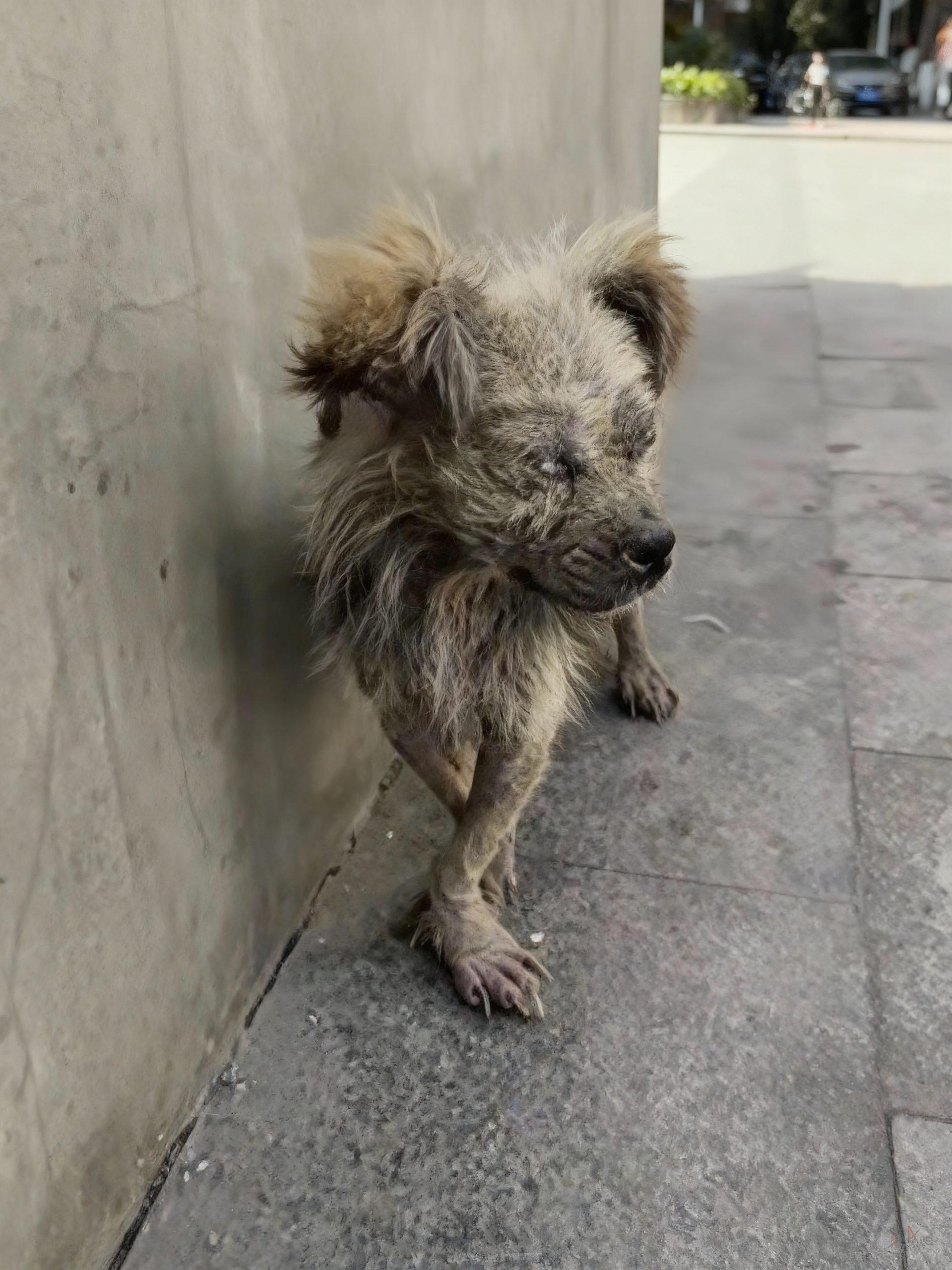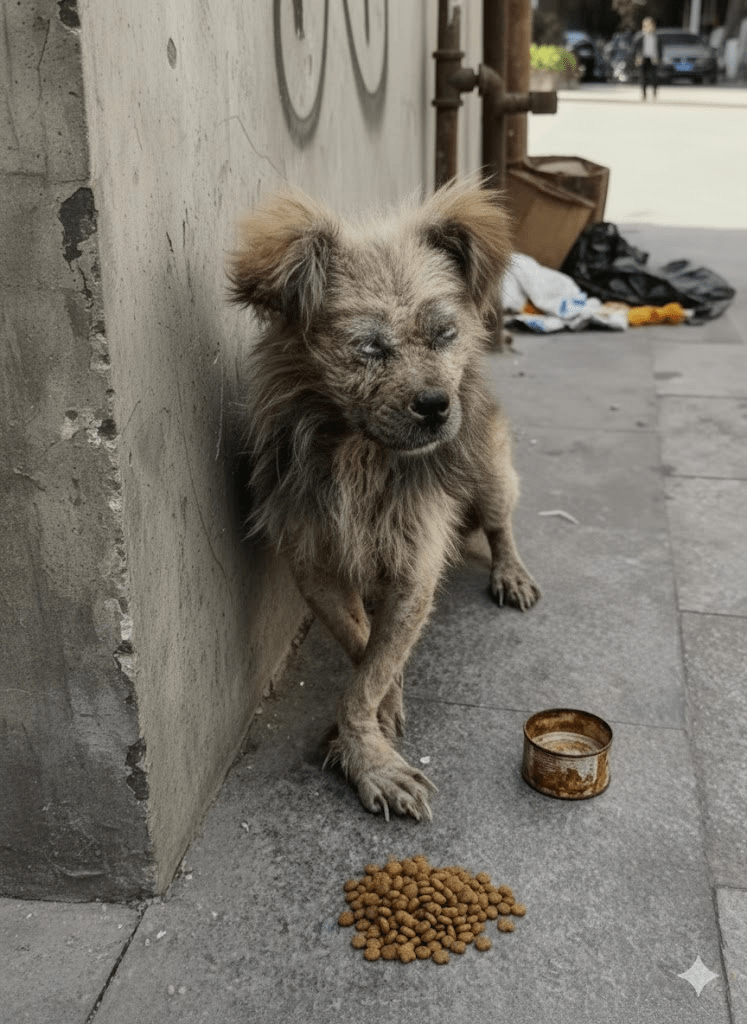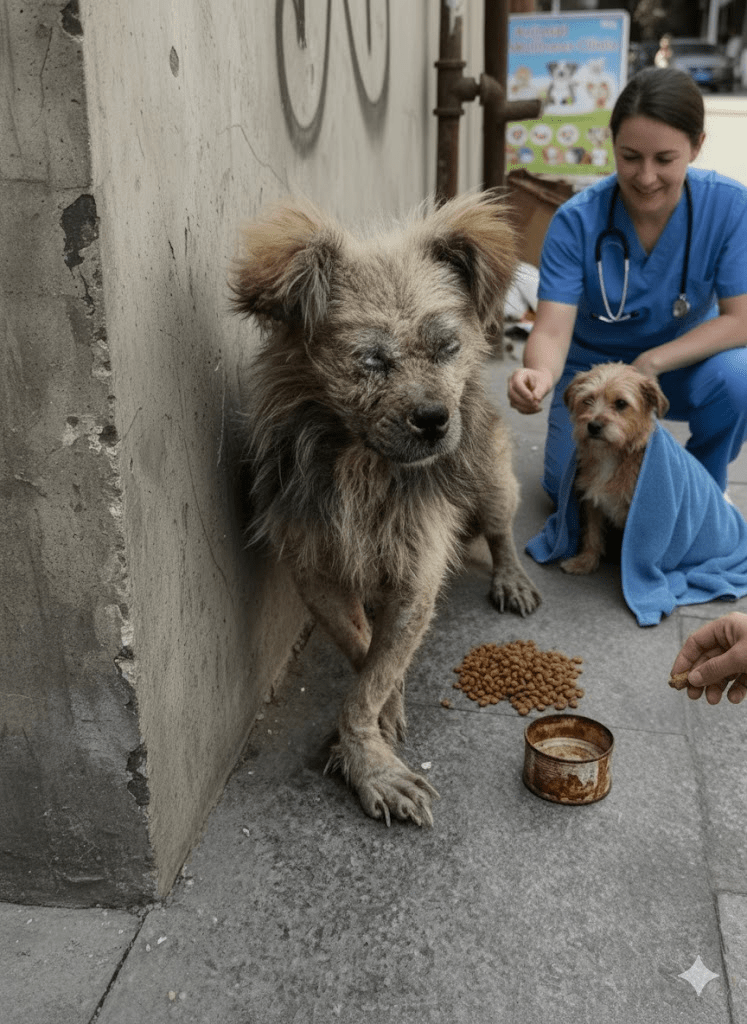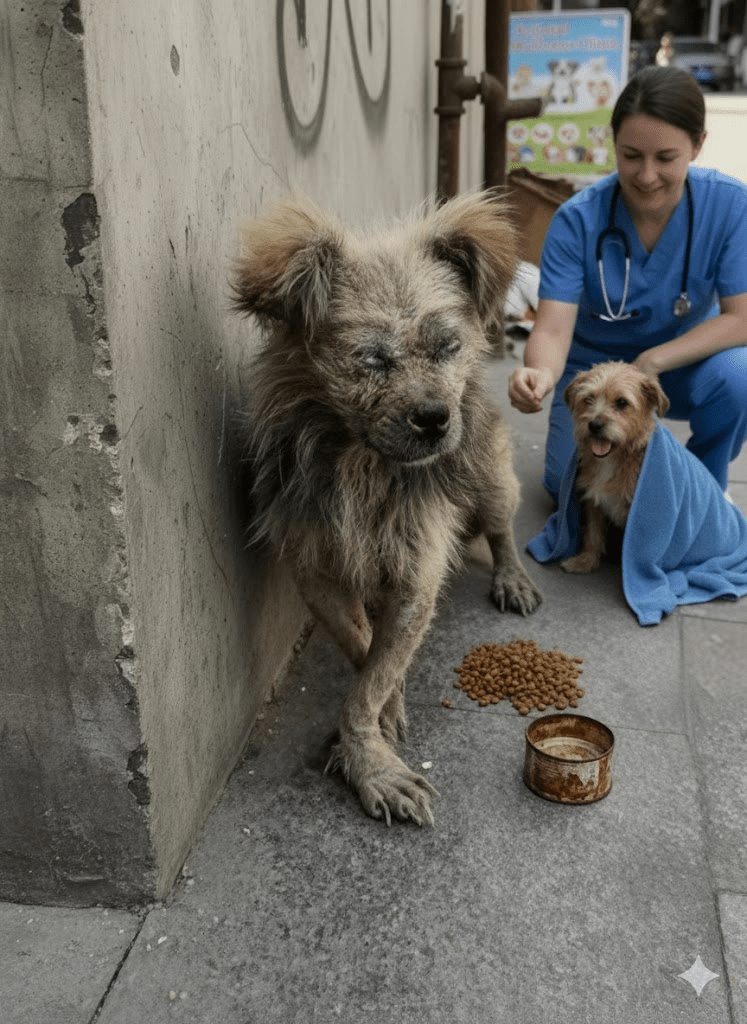The image before us, though stark and emotionally resonant, serves as a powerful testament to a pervasive issue often hidden in plain sight: animal neglect. It captures a small, scruffy dog, its fur matted and its eyes seemingly clouded, leaning against a cold concrete wall. The posture suggests weariness, perhaps even resignation, yet there’s an undeniable resilience in its stance. This isn’t merely a snapshot of an animal; it’s a visual narrative of vulnerability, a silent plea echoing the struggles faced by countless creatures who lack a voice to articulate their suffering. This particular dog, with its unkempt appearance and the visible signs of hardship, forces us to confront uncomfortable truths about our responsibilities towards the sentient beings with whom we share our world. Its presence against the backdrop of an indifferent urban landscape symbolizes the isolation and hardship experienced by neglected animals, compelling us to look deeper than the surface and consider the systemic issues that lead to such heartbreaking situations. The image is a call to action, an invitation to empathize, and a stark reminder that the well-being of animals is intrinsically linked to the compassion and vigilance of humanity.

Animal neglect encompasses a broad spectrum of behaviors, ranging from passive indifference to active cruelty, all of which result in physical and psychological harm to animals. It’s not always about intentional malice; sometimes, it stems from ignorance, financial hardship, or an overwhelming inability to cope with the responsibilities of pet ownership. The dog in the photograph, for instance, exhibits characteristics often associated with long-term neglect: its fur is severely matted, a condition that can cause skin infections, restrict movement, and lead to significant discomfort. Its cloudy eyes might indicate untreated infections, cataracts, or other medical issues that, if left unattended, can result in blindness and further diminish its quality of life. These visible signs underscore the critical need for basic care, including proper nutrition, regular grooming, and timely veterinary attention, all of which are essential for an animal’s health and well-being.

The psychological toll of neglect is often as severe as, if not more profound than, the physical injuries. Animals are sentient beings capable of experiencing a wide range of emotions, including fear, anxiety, loneliness, and depression. A neglected animal, constantly exposed to harsh conditions, lack of affection, and unpredictable environments, can develop severe behavioral issues. They might become withdrawn and fearful, as the dog in the image appears to be, or they might exhibit aggression as a defense mechanism. Socialization, a crucial aspect of an animal’s development, is often absent in cases of neglect, leading to difficulties in interacting with humans and other animals. These psychological scars can linger long after physical wounds have healed, requiring extensive rehabilitation and patience to help the animal regain trust and a sense of security.

Societal factors play a significant role in the prevalence of animal neglect. Economic downturns, housing instability, and lack of accessible veterinary care can force even well-meaning owners into situations where they cannot adequately care for their pets. Overpopulation of stray animals, often a result of irresponsible breeding and lack of spay/neuter programs, also exacerbates the problem, leading to more animals living on the streets in precarious conditions. Furthermore, insufficient legal frameworks and lax enforcement of animal welfare laws contribute to a culture where neglect can go unpunished. Addressing these systemic issues requires a multi-faceted approach, including public education campaigns, affordable pet care initiatives, and stronger legal protections for animals.

When we encounter animals like the one in the photograph, our immediate response is often one of pity or sadness. However, it is crucial to move beyond these initial emotions and consider how we, as individuals and as a community, can actively contribute to alleviating their suffering. Reporting suspected cases of neglect to local animal welfare organizations or authorities is a vital first step. These organizations are equipped to investigate, rescue, and provide the necessary medical attention and rehabilitation. Supporting animal shelters through donations, volunteering, or fostering can also make a tangible difference in the lives of neglected animals, providing them with a safe haven and a second chance at a loving home.







